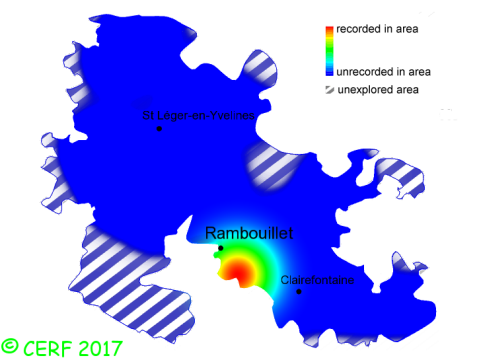|
Omphalotus olearius (DC.:Fr.) Fayod
|
common name(s) : Olive-tree Pleurotus, Jack O'Lantern2
New classification: Basidiomycota/Agaricomycotina/Agaricomycetes/Agaricomycetidae/Agaricales/Marasmiaceae
Former classification: Basidiomycota/Homobasidiomycetes/Agaricomycetideae/Boletales/Omphalotaceae
synonyms: Clitocybe olearia, Pleurotus olearius
(unconfirmed synonyms: Clitocybe olearius)
edibility : poisonous
|
|
|
The cap is orange-brown.
The cap surface is smooth, not viscid nor sticky.
The stem is orange brown to red brown, without ring.
The flesh is white to yellowish, unchanging; its taste is slightly acidic; the odour is strong, unpleasant, of rancid oil;
its texture is fibrous.
The gills are yellow or orange, decurrent, crowded .
The spore print is white. This species is saprophytic, sometimes parasitic.
It grows on roots or at the base of deciduous trees, with olive trees, chestnut, cork oak, holm, juniper, hornbeam.
The fruiting period takes place from April to March.
| Dimensions: | width of cap approximately 10 cm (between 2 and 20 cm) |
| | height of stem approximately 10 cm (between 4 and 17 cm) |
| | thickness of stem (at largest section) approximately 15 mm (between 6 and 28 mm) |
Chemical tests : none.
Distinctive features : entirely bright orange-yellow; in tufts on wood (often olive trees); phosphorescent and decurrent gills, sinuate and off-centre stem; in warm climates
Omphalotus olearius is rare and confined in the forest of Rambouillet, and is quite rare, more generally speaking
.
|  | | Above : distribution map of Omphalotus olearius in the forest of Rambouillet |
|
page updated on 14/01/18